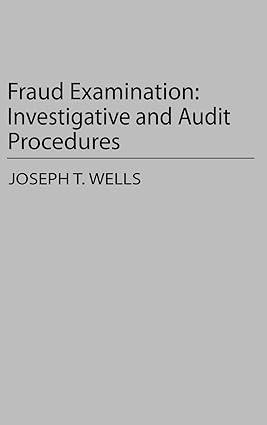Answered step by step
Verified Expert Solution
Question
1 Approved Answer
When a sale is recorded on an Invoice, Quickbook records a: Debit (increase) to cash Credit (increase) to owners contribution Debit (Increase) to accounts receivable
- When a sale is recorded on an Invoice, Quickbook records a:
- Debit (increase) to cash
- Credit (increase) to owners contribution
- Debit (Increase) to accounts receivable
- Credit (increase) to accounts payable.
- To enter a sales transaction with payment to be received later:
- From the navigation Bar, Select vendors
- From the navigation bar, select expenses
- From the Create (+) icon, select invoice
- From the Gear Icon, Select sales transactions
- When a customer pays cash at the time of sale, what do you record?
- A sales receipt
- An invoice
- A purchase order
- A thank you note
- When a customer purchases products or services but does not pay at the point of sale, what do you record?
- A sales receipt
- An invoice
- A purchase order
- A reminder
- We can update the customers list at which of the following two points?
- Before entering transactions
- While entering transactions
- After entering transactions
- Which of the following two are Customers and Sales transactions?
- Invoice
- Receive payment
- Pay bills
- Check
- Types of products and services on the products and services list include which of the following?
- Service
- Batch
- Inventory
- All of the above
- Which of the following products and service types track quantities?
- Service items
- Inventory items
- Non-inventory items
- None of the above
- When preparing a sales receipt if we select deposit to undeposited funds, then we must:
- Create a bank deposit to move the customer payment from undeposited funds to the checking account.
- No further action is required
- Create a second sales receipt depositing the amount to the checking account
- Create a subsequent invoice depositing the amount to the checking account.
- When preparing a sales receipt, if we select deposit to a checking account then we:
- Create a bank deposit to move the customer payment from the checking account to the undeposited Funds account.
- No further action is required
- Create a second sales receipt depositing the amount to the checking account.
- Create a subsequent invoice depositing the amount to the checking account.
- Indicate the order in which the following onscreen customers and sales transaction forms typically should be prepared:
- Invoice+ bank deposit+ receive payment
- Invoice+ Sales receipt+ Bank deposit
- Invoice+ receive payment+ bank deposit
- None of the above
- Which of the following reports provides information about which customers owe money to a business?
- Profit & loss
- Balance sheet
- Statement of cash flows
- Accounts receivable aging
- Accounts receivable are:
- Amounts totaling the net worth of a company.
- Amounts paid to owners
- Amounts that customers owe your business
- Amounts owed to others and are future obligations.
Step by Step Solution
There are 3 Steps involved in it
Step: 1

Get Instant Access to Expert-Tailored Solutions
See step-by-step solutions with expert insights and AI powered tools for academic success
Step: 2

Step: 3

Ace Your Homework with AI
Get the answers you need in no time with our AI-driven, step-by-step assistance
Get Started


